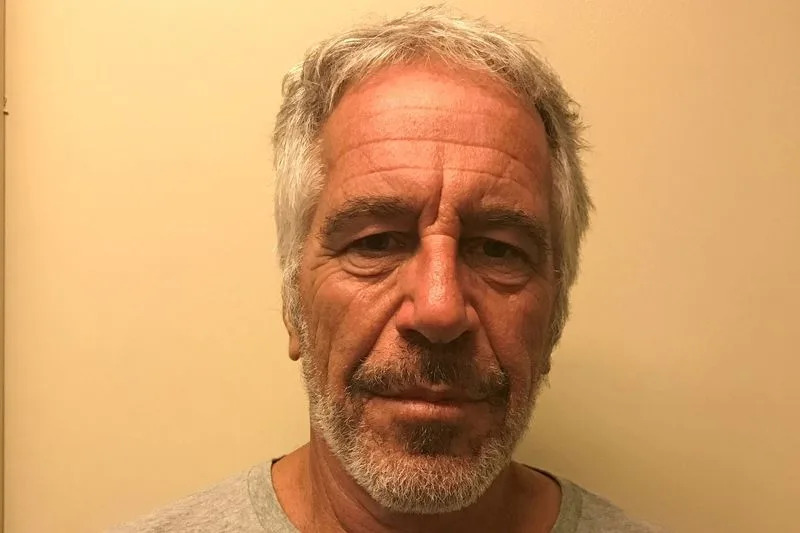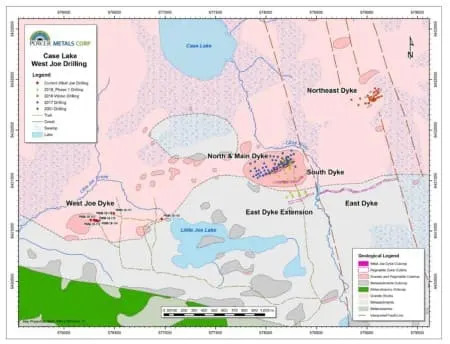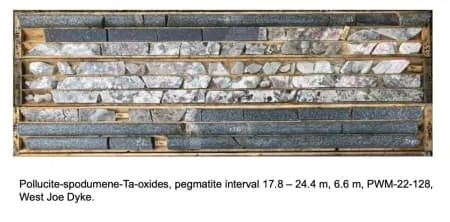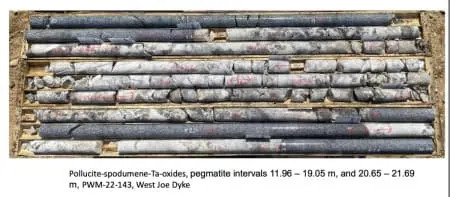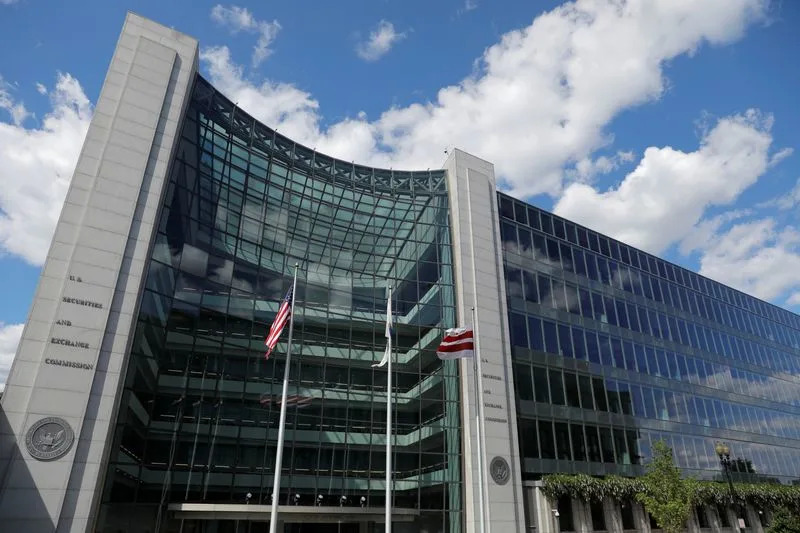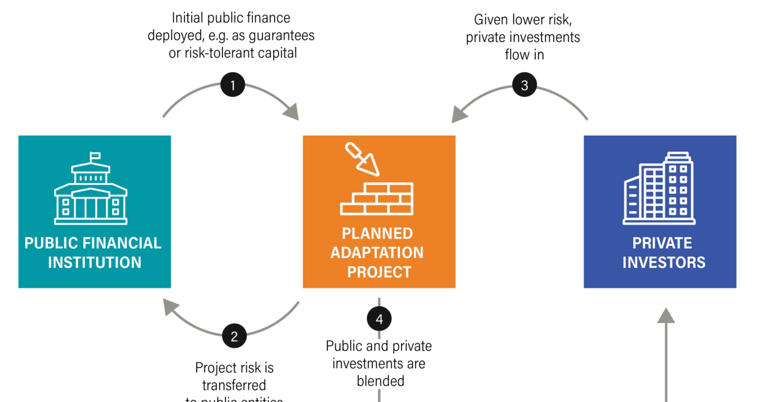A whistleblower raised safety concerns about OceanGate’s submersible in 2018. Then he was fired.
Mark Harris
Everything you needed to know about OceanGate's Titan submersible was discussed in a 2022 CBS news pieceMark Harris
TECHCRUNCH
Tue, June 20, 2023 a
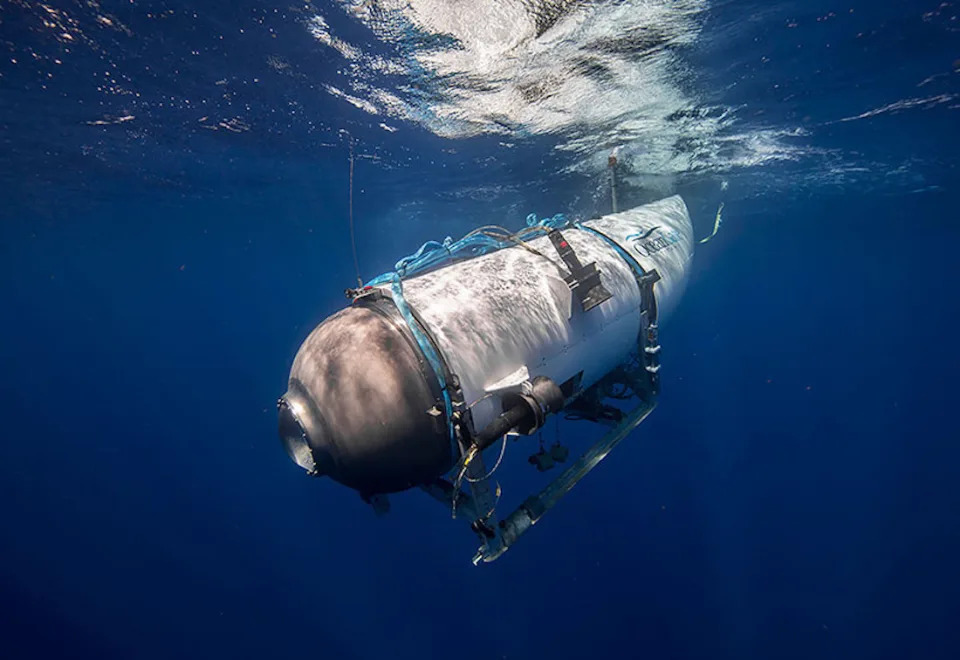
Image Credits: Oceangate
The director of marine operations at OceanGate, the company whose submersible went missing Sunday on an expedition to the Titanic in the North Atlantic, was fired after raising concerns about its first-of-a-kind carbon fiber hull and other systems before its maiden voyage, according to a filing in a 2018 lawsuit first reported by Insider and New Republic.
David Lochridge was terminated in January 2018 after presenting a scathing quality control report on the vessel to OceanGate’s senior management, including founder and CEO Stockton Rush, who is on board the missing vessel.
According to a court filing by Lochridge, the preamble to his report read: “Now is the time to properly address items that may pose a safety risk to personnel. Verbal communication of the key items I have addressed in my attached document have been dismissed on several occasions, so I feel now I must make this report so there is an official record in place.”
The report detailed “numerous issues that posed serious safety concerns,” according to the filing. These included Lochridge’s worry that “visible flaws” in the carbon fiber supplied to OceanGate raised the risk of small flaws expanding into larger tears during “pressure cycling.” These are the huge pressure changes that the submersible would experience as it made its way and from the deep ocean floor. He noted that a previously tested scale model of the hull had “prevalent flaws.”
Carbon fiber composites can be stronger and lighter than steel, making a submersible naturally buoyant. But they can also be prone to sudden failure under stress. The hull that Lochridge was writing about was made by Spencer Composites, the only company to have previously made a carbon fiber hull for a manned submersible. (That submersible was commissioned by explorer Steve Fossett for a record-breaking dive, but he died in a light aircraft crash before it could be used.)
Lochridge’s recommendation was that non-destructive testing of the Titan’s hull was necessary to ensure a “solid and safe product.” The filing states that Lochridge was told that such testing was impossible, and that OceanGate would instead rely on its much touted acoustic monitoring system.
The company claims this technology, developed in-house, uses acoustic sensors to listen for the tell-tale sounds of carbon fibers in the hull deteriorating to provide “early warning detection for the pilot with enough time to arrest the descent and safely return to surface.”
Lochridge, however, worried in the lawsuit that the system would not reveal flaws until the vessel was descending, and then might only provide “milliseconds” of warning before a catastrophic implosion.
OceanGate plans an expedition to 3D scan the Titanic
Russell McDuff, a veteran oceanographer and chairman of OceanGate’s scientific and research foundation for three years, noted that contact with the Titan was lost on Sunday after only an hour and 45 minutes. “This suggests to me that they might have still been in the water column, descending to the Titanic,” told TechCrunch in a phone interview.
Lochridge also strongly encouraged OceanGate to have a classification agency, such as the American Bureau of Shipping, inspect and certify the Titan.
A day after filing his report, Lochridge was summoned to a meeting with Rush and company’s human resources, engineering and operations directors. There, the filing states, he was also informed that the manufacturer of the Titan’s forward viewport would only certify it to a depth of 1,300 meters due to OceanGate’s experimental design. The filing states that OceanGate refused to pay for the manufacturer to build a viewport that would meet the Titan’s intended depth of 4,000 meters. The Titanic lies about 3,800 meters below the surface.
The filing also claims that hazardous flammable materials were being used within the submersible.
At the end of the meeting, after saying that he would not authorize any manned tests of Titan without a scan of the hull, Lochridge was fired and escorted from the building.
Lochridge, who claimed he was discharged in retaliation for being a whistleblower, made his filing after OceanGate sued him in federal court in Seattle that June. OceanGate has accused him of sharing confidential information with two individuals, as well as with the Occupational Safety and Health Administration (OSHA). In the lawsuit, OceanGate characterized Lochridge’s report as false, and accused him of committing fraud by manufacturing a reason to be fired.
The lawsuit was settled in November 2018. Neither OceanGate nor Lochridge responded to requests for comment. OSHA could not immediately provide details of the alleged report. A routine OSHA inspection of OceanGate in 2021 found only three minor workplace safety violations resulting in no financial penalties.
A few months after Lochridge’s dismissal, the company published a blog post that laid out its reasons for not having Titan certified by the American Bureau of Shipping or a similar organization.
“The vast majority of marine (and aviation) accidents are a result of operator error, not mechanical failure,” it reads. “As a result, simply focusing on classing the vessel does not address the operational risks. Maintaining high-level operational safety requires constant, committed effort and a focused corporate culture – two things that OceanGate takes very seriously and that are not assessed during classification.”
In 2019, Rush gave an interview to Smithsonian magazine, in which he said: “There hasn’t been an injury in the commercial sub industry in over 35 years. It’s obscenely safe, because they have all these regulations. But it also hasn’t innovated or grown—because they have all these regulations.”
Following Lochridge’s departure, the Titan was tested safely on increasingly deep dives, including to 4,000 meters in the Bahamas. However, it seems one of Lochridge’s concerns would soon be borne out. In January 2020, Rush gave an interview to GeekWire in which he admitted that the Titan’s hull “showed signs of cyclic fatigue.” Because of this, the hull’s depth rating had been reduced to 3,000 meters. “Not enough to get to the Titanic,” Rush said.
During 2020 and 2021, the Titan’s hull was either repaired or rebuilt by two Washington state companies, Electroimpact and Janicki Industries, that largely work in aerospace. In late 2021, the Titan made its first trip down to the wreck of the Titanic.
Spencer Composites says that the Titan was not using its carbon fiber hull on Sunday’s dive. Presumably apart from the hull work, one source familiar with the company told TechCrunch that not much with Titan had changed at all since 2018.
At the time of publication, the Titan remains missing, with Rush, French diver Paul-Henri Nargeolet, British billionaire Hamish Harding, Pakistani businessman Shahzada Dawood and his son reportedly on board. A massive search and rescue operation is underway.
“They're doing everything that they logically can,” McDuff said. "But I’m a little pessimistic because of the amount of time that's gone by.”
Tue, June 20, 2023 a

Image Credits: Oceangate
The director of marine operations at OceanGate, the company whose submersible went missing Sunday on an expedition to the Titanic in the North Atlantic, was fired after raising concerns about its first-of-a-kind carbon fiber hull and other systems before its maiden voyage, according to a filing in a 2018 lawsuit first reported by Insider and New Republic.
David Lochridge was terminated in January 2018 after presenting a scathing quality control report on the vessel to OceanGate’s senior management, including founder and CEO Stockton Rush, who is on board the missing vessel.
According to a court filing by Lochridge, the preamble to his report read: “Now is the time to properly address items that may pose a safety risk to personnel. Verbal communication of the key items I have addressed in my attached document have been dismissed on several occasions, so I feel now I must make this report so there is an official record in place.”
The report detailed “numerous issues that posed serious safety concerns,” according to the filing. These included Lochridge’s worry that “visible flaws” in the carbon fiber supplied to OceanGate raised the risk of small flaws expanding into larger tears during “pressure cycling.” These are the huge pressure changes that the submersible would experience as it made its way and from the deep ocean floor. He noted that a previously tested scale model of the hull had “prevalent flaws.”
Carbon fiber composites can be stronger and lighter than steel, making a submersible naturally buoyant. But they can also be prone to sudden failure under stress. The hull that Lochridge was writing about was made by Spencer Composites, the only company to have previously made a carbon fiber hull for a manned submersible. (That submersible was commissioned by explorer Steve Fossett for a record-breaking dive, but he died in a light aircraft crash before it could be used.)
Lochridge’s recommendation was that non-destructive testing of the Titan’s hull was necessary to ensure a “solid and safe product.” The filing states that Lochridge was told that such testing was impossible, and that OceanGate would instead rely on its much touted acoustic monitoring system.
The company claims this technology, developed in-house, uses acoustic sensors to listen for the tell-tale sounds of carbon fibers in the hull deteriorating to provide “early warning detection for the pilot with enough time to arrest the descent and safely return to surface.”
Lochridge, however, worried in the lawsuit that the system would not reveal flaws until the vessel was descending, and then might only provide “milliseconds” of warning before a catastrophic implosion.
OceanGate plans an expedition to 3D scan the Titanic
Russell McDuff, a veteran oceanographer and chairman of OceanGate’s scientific and research foundation for three years, noted that contact with the Titan was lost on Sunday after only an hour and 45 minutes. “This suggests to me that they might have still been in the water column, descending to the Titanic,” told TechCrunch in a phone interview.
Lochridge also strongly encouraged OceanGate to have a classification agency, such as the American Bureau of Shipping, inspect and certify the Titan.
A day after filing his report, Lochridge was summoned to a meeting with Rush and company’s human resources, engineering and operations directors. There, the filing states, he was also informed that the manufacturer of the Titan’s forward viewport would only certify it to a depth of 1,300 meters due to OceanGate’s experimental design. The filing states that OceanGate refused to pay for the manufacturer to build a viewport that would meet the Titan’s intended depth of 4,000 meters. The Titanic lies about 3,800 meters below the surface.
The filing also claims that hazardous flammable materials were being used within the submersible.
At the end of the meeting, after saying that he would not authorize any manned tests of Titan without a scan of the hull, Lochridge was fired and escorted from the building.
Lochridge, who claimed he was discharged in retaliation for being a whistleblower, made his filing after OceanGate sued him in federal court in Seattle that June. OceanGate has accused him of sharing confidential information with two individuals, as well as with the Occupational Safety and Health Administration (OSHA). In the lawsuit, OceanGate characterized Lochridge’s report as false, and accused him of committing fraud by manufacturing a reason to be fired.
The lawsuit was settled in November 2018. Neither OceanGate nor Lochridge responded to requests for comment. OSHA could not immediately provide details of the alleged report. A routine OSHA inspection of OceanGate in 2021 found only three minor workplace safety violations resulting in no financial penalties.
A few months after Lochridge’s dismissal, the company published a blog post that laid out its reasons for not having Titan certified by the American Bureau of Shipping or a similar organization.
“The vast majority of marine (and aviation) accidents are a result of operator error, not mechanical failure,” it reads. “As a result, simply focusing on classing the vessel does not address the operational risks. Maintaining high-level operational safety requires constant, committed effort and a focused corporate culture – two things that OceanGate takes very seriously and that are not assessed during classification.”
In 2019, Rush gave an interview to Smithsonian magazine, in which he said: “There hasn’t been an injury in the commercial sub industry in over 35 years. It’s obscenely safe, because they have all these regulations. But it also hasn’t innovated or grown—because they have all these regulations.”
Following Lochridge’s departure, the Titan was tested safely on increasingly deep dives, including to 4,000 meters in the Bahamas. However, it seems one of Lochridge’s concerns would soon be borne out. In January 2020, Rush gave an interview to GeekWire in which he admitted that the Titan’s hull “showed signs of cyclic fatigue.” Because of this, the hull’s depth rating had been reduced to 3,000 meters. “Not enough to get to the Titanic,” Rush said.
During 2020 and 2021, the Titan’s hull was either repaired or rebuilt by two Washington state companies, Electroimpact and Janicki Industries, that largely work in aerospace. In late 2021, the Titan made its first trip down to the wreck of the Titanic.
Spencer Composites says that the Titan was not using its carbon fiber hull on Sunday’s dive. Presumably apart from the hull work, one source familiar with the company told TechCrunch that not much with Titan had changed at all since 2018.
At the time of publication, the Titan remains missing, with Rush, French diver Paul-Henri Nargeolet, British billionaire Hamish Harding, Pakistani businessman Shahzada Dawood and his son reportedly on board. A massive search and rescue operation is underway.
“They're doing everything that they logically can,” McDuff said. "But I’m a little pessimistic because of the amount of time that's gone by.”
Ananya Bhattacharya
QUARTZ
Tue, June 20, 2023
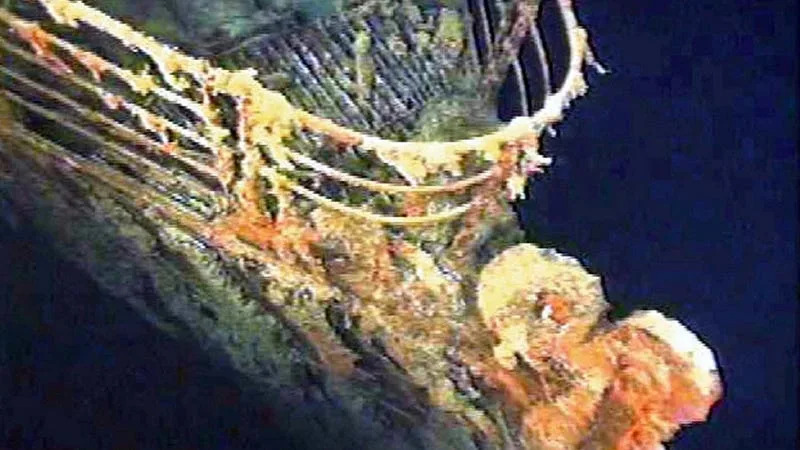
All in the name of the Titanic
The US Coast Guard is currently leading an operation to rescue the five people aboard a submersible that has went missing on June 18 during a trip to explore the ruins of the Titanic.
The company behind the expedition, OceanGate, made its first trip to the Titanic wreck in 2021 and then again in 2022. The company went back this summer as part of plans to “continue to return annually to further document the Titanic and its rate of decay,” its website says.
The brainchild of CEO Stockton Rush, the Titan submersible—a watercraft that, unlike a submarine which is autonomous, needs a mother ship to launch it—is made of five-inch-thick carbon fiber, capped on each end by a dome of titanium, one of which has a clear window. It is launched from and it returns to its support vessel—the Polar Prince, in this case.
CBS journalist David Pogue highlighted some of the Titan’s oddities as part of a news story he did in 2022 when he joined an expedition to the Titanic wreck. These included elements that seemed “improvised from off-the-shelf parts,” and the game controller that operated the craft.
Tue, June 20, 2023

All in the name of the Titanic
The US Coast Guard is currently leading an operation to rescue the five people aboard a submersible that has went missing on June 18 during a trip to explore the ruins of the Titanic.
The company behind the expedition, OceanGate, made its first trip to the Titanic wreck in 2021 and then again in 2022. The company went back this summer as part of plans to “continue to return annually to further document the Titanic and its rate of decay,” its website says.
The brainchild of CEO Stockton Rush, the Titan submersible—a watercraft that, unlike a submarine which is autonomous, needs a mother ship to launch it—is made of five-inch-thick carbon fiber, capped on each end by a dome of titanium, one of which has a clear window. It is launched from and it returns to its support vessel—the Polar Prince, in this case.
CBS journalist David Pogue highlighted some of the Titan’s oddities as part of a news story he did in 2022 when he joined an expedition to the Titanic wreck. These included elements that seemed “improvised from off-the-shelf parts,” and the game controller that operated the craft.
CBS reporter David Pogue questioned the Titan submersible in 2022
Communications breakdown
There’s no GPS underwater, so the surface ship is supposed to guide the sub to the shipwreck by sending text messages. During the 2022 dive CBS reported in, communications broke down and the sub lost contact for 2.5 hours—and it never found the Titanic wreck, Pogue said.
And Pogue isn’t the only one with such a story. Mike Reiss, a TV comedy writer who worked on The Simpsons and took the trip last year, said communication was lost on all three dives he was part of last year, including one to the Titanic.
Regulatory red flag
To join the expedition, Pogue had to sign a document stating the following: “This experimental vessel has not been approved or certified by any regulatory body, and could result in physical injury, emotional trauma, or death.”
OceanGate’s website claims expeditions will be conducted respectfully and in accordance with National Oceanic and Atmospheric Administration (NOAA) Guidelines for Research Exploration and Salvage of RMS Titanic, and comply with UNESCO guidelines for the preservation of underwater world heritage sites. But nowhere does it share evidence of vetting and obtaining regulatory approval on the vessel itself.
No escape plan
There are at least seven different functions that allow the sub to resurface, so it was “really concerning” that it hadn’t yet, Pogue told the BBC. If the sub became trapped or there was a leak—both possibilities—“there’s no backup, there’s no escape pod.”
Quotable: CEO Stockton Rush touts Titan’s safety
“The pressure vessel is not MacGyver at all, because that’s where we worked with Boeing and NASA and the University of Washington. Everything else can fail, your thrusters can go, your lights can go. You’re still going to be safe.”—CEO Stockton Rush to CBS last November
The missing Titan submersible, by the digits
5: People the truck-sized sub can accommodate, comprising 1 pilot and 4 crew. A Pakistani businessman and his son are aboard the submersible. So is Hamish Harding, a British billionaire and explorer. The other two passengers are believed to be Paul Henry Nargeolet, a former French navy commander, deep diver, and a submersible pilot, and OceanGate chief Stockton Rush
$250,000: Cost of a seat on the submersible
8 days: How long the complete journey lasts
4,000 meters (13,123 feet): Maximum depth the submersible reaches to view the Titanic, which sits at 3,800 feet
2,000 feet: The maximum depth of the underwater vehicle the US Navy uses for rescuing people from submarines
900 miles: How far the area of focus for the rescue operation is from the US east coast (430 miles away from Newfoundland in Canada)
20,000 feet: The depth CURV-21, which the Navy uses to salvage objects from the sea floor, can reach but it only has a lift capacity of...
...4,000 pounds: That’s way less than the 20,000 pound Titan submersible
70 and 96 hours: How long the oxygen supply on the vessel is thought to be able to last
50: Test dives the Titan had undergone, including to the equivalent depth of the Titanic, in deep waters off the Bahamas, as per OceanGate
1 hour and 45 minutes: How far into its dive Sunday (May 18) the submersible lose contact with its support vessle, the Polar Prince, according to the Boston Coast Guard, which is leading the search operation
17: Number of bolts with which the crew closes the hatch from the outside. “There’s no other way out,” CBS’s Pogue had reported
$19.8 million: How much funding OceanGate has raised in two rounds since it was founded in 2009, according to Crunchbase
Person of interest: Hamish Harding
Harding, who posted about the expedition on Instagram, is an avid aviator and explorer.
The British billionaire and owner of Action Aviation was one of the first people to travel the Challenger Deep in the Pacific, the deepest known point on Earth. He also holds the Guinness world record for the fastest circumnavigation of the Earth via the North and South Poles by an aircraft at 46 hours, 40 minutes, and 22 seconds.
After taking part in a human space flight by Jeff Bezos’s Blue Origin, Harding also ranks among a handful of space tourists in the world.
Rabbit hole: Seeing parts of the Titanic outside the ocean
The Titanic, which hit an iceberg and sank during its maiden voyage from Britain to New York in 1912, has stoked curiosity for years, serving as the backdrop for the namesake blockbuster movie and various books. The wreckage was only discovered years later, in 1985.
There are alternatives to diving underwater for those curious about the Titanic’s history and wreck. Dozens of Titanic museums across the UK and the USA display various remnants of the tragedy that claimed over 1,500 lives. These include not only original parts and life-size replicas of the ship, but also recovered personal belongings like baby shoes and a box camera, as well as audio-visual testimonies from some of the 700-odd survivors.
Related stories
🎖️ The discovery of the Titanic wreck was a front for a secret US military mission
🚢 The sinking of the Titanic left a titanic impact on the language we use today
